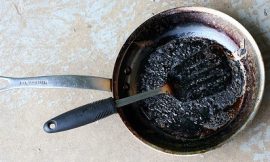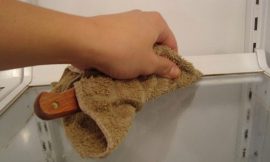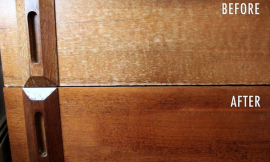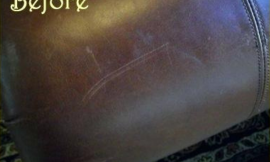Did you know that mold can grow on carpets within just 24 to 48 hours of exposure to moisture? This alarming fact highlights why immediate action is crucial when facing a mold issue in your home. If you’ve noticed dark patches or a musty smell coming from your carpets, don’t panic! With the right methods, you can restore your carpets and keep your family safe. In this article, we will explore effective cleaning methods to remove mold from carpets, equipping you with everything you need to tackle this stubborn problem head-on!
Understanding Mold Growth in Carpets
Mold can be a sneaky and troublesome issue, particularly when it takes residence in your carpets. But what exactly causes this unwanted growth?
What Causes Mold in Carpets?
Several factors contribute to mold growth in carpets. One of the most significant culprits is excess moisture and humidity. If the air in your home is too humid or if your carpets remain damp for extended periods, you’re providing a perfect environment for mold to thrive.
Poor ventilation can also lead to mold problems. When air doesn’t circulate properly, moisture builds up, increasing the likelihood of mold taking hold.
Water leaks or spills are other common causes. Anytime there’s a water incident, whether it’s a spilled drink or a leaky pipe, carpets can absorb moisture which, if not dealt with promptly, may foster mold growth.
Conditions Favorable for Mold Growth
Mold flourishes under certain conditions. Warmth and darkness are key; mold loves the cozy, hidden areas of your home. If your carpets are often warm and shielded from light, they’re prime real estate for mold.
Additionally, carpets are made from organic materials like wool or nylon, which can serve as food for mold spores, making them even more susceptible to infestation.
Potential Health Risks of Mold Exposure
Mold isn’t just a nuisance; it can also pose health risks. Allergies and respiratory issues are common effects of mold exposure. Symptoms may include sneezing, runny nose, or difficulty breathing.
Long-term health effects can also arise from persistent exposure. Prolonged mold exposure may lead to chronic health conditions, especially for individuals with existing respiratory issues or weakened immune systems.
Identifying Signs of Mold Infestation
Knowing how to identify mold can help tackle problems before they escalate.
Visual Indicators
One of the first signs of a mold infestation is dark spots and discoloration on the carpet. These can range from small specks to larger patches.
Visible mold colonies are another telltale sign. If you notice fuzzy or slimy growth on the carpet’s surface, it’s time to take action.
Olfactory Indicators
Often, your nose can detect a mold problem before your eyes. Musty or earthy odors are common indicators of mold presence. If you notice these unpleasant scents that persist even after cleaning, your carpets might harbor mold.
Tactile Indicators
Changes in the texture of the carpet can also indicate mold. If your carpet feels wet or spongy, that’s a strong sign moisture—and potentially mold—is present. You might also find moisture underneath the carpet, which can lead to further issues if not addressed.
Effective Methods for Mold Removal
Once you’ve determined that mold has taken root in your carpets, it’s time to take action.
Cleaning Solutions
There are several effective cleaning solutions to use. A simple vinegar and water solution can be quite effective against mold. Alternatively, a baking soda and water paste can offer cleaning benefits as well.
If these DIY solutions don’t suffice, commercial mold removers are available and designed specifically for such tasks.
Step-by-Step Cleaning Process
Start with initial vacuuming to remove loose dirt and debris. After that, apply your chosen cleaning solution to the affected areas and let it sit for a few minutes to penetrate.
Rinsing and drying the carpet thoroughly is crucial afterward. Ensure that the carpet is completely dry to prevent mold from returning.
Using Essential Oils for Mold Removal
Essential oils, like tea tree oil, are quite effective due to their antifungal properties. Adding a few drops to your cleaning solution can enhance its mold-fighting capabilities.
Other beneficial essential oils, including lavender and eucalyptus, can also be used for their antibacterial and antifungal properties.
Prevention Strategies to Avoid Mold Recurrence
After tackling mold, it’s essential to implement strategies to prevent its return.
Dehumidification Practices
Using dehumidifiers in damp areas of your home can significantly reduce humidity levels, thereby discouraging mold growth. Proper ventilation techniques, such as opening windows and using exhaust fans, can also help keep air circulating and dry.
Regular Cleaning and Maintenance
Routine carpet cleaning can prevent mold buildup. Regular vacuuming and cleaning will help maintain a dry environment. Additionally, addressing spills or leaks promptly can thwart mold before it starts.
Choosing Mold-Resistant Carpets
When purchasing new carpets, explore mold-resistant materials. Many carpets now come with treatments designed to resist mold, which can provide peace of mind and long-term protection against future problems.
Conclusion
Removing mold from carpets may seem daunting, but with the right methods and proactive strategies, you can effectively combat this issue. Remember, early detection is key! Stay vigilant for signs of mold and act quickly to maintain a healthy living environment. Let’s keep our carpets, and our homes, mold-free! If you’re ready to tackle your mold issue, start implementing these methods today and enjoy a clean, safe space!










